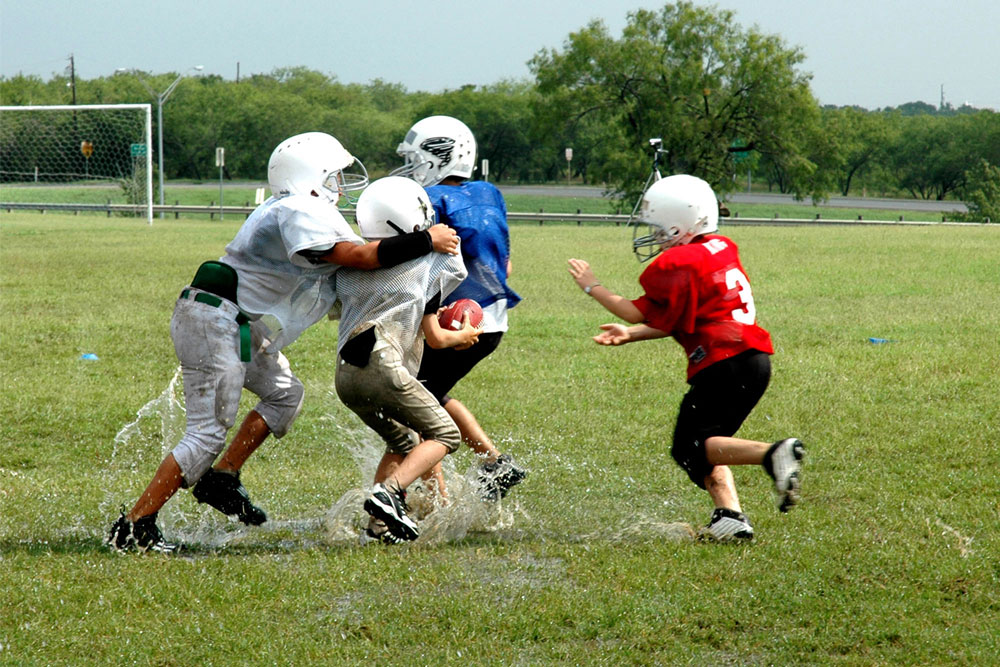Sponsored content by BET US
In recent years, the youth sports system in the United States has seen a marked increase in scrutiny, with many recognizing the potential for change. A multifaceted approach is necessary to bring about a more sustainable, equitable, and effective youth sports model. This long-form news article outlines a set of practical steps that can be taken to improve the youth sports system in the United States.
Prioritizing a Holistic Approach to Youth Development
Youth sports are about much more than competition; they serve as a breeding ground for the future stars who might one day set the NFL odds. These platforms provide an avenue for children to grow and learn valuable life skills. The emphasis must not just be on winning but also on the pure joy of playing, teamwork, and personal growth. Just like how NFL odds are not the sole determinant of a game’s outcome, winning in youth sports should not overshadow the essence of participation and development. These core values will provide a solid foundation for young athletes, encouraging a positive experience that carries into their future sports participation
Addressing Cost Barriers
High costs associated with youth sports participation have been identified as a significant barrier. On average, a family spends $692 per sport, per child, each year, which includes costs such as registration, uniforms, and equipment. For families with multiple children involved in different sports, this figure quickly escalates into the thousands. To counter this, youth sports organizations need to focus on lowering costs and perhaps exploring options for financial assistance or scholarships for those in need.
Emphasizing Safety in Sports
Safety should always be paramount when it comes to youth sports. With more than 3.5 million youth athletes sustaining sports injuries each year in the U.S., it’s evident that safety measures need to be reinforced. Initiatives for early education and awareness about safe sports practices are essential in reducing the risk of injuries and ensuring a safer environment for young athletes.
Encouraging Diversity, Equity, and Inclusion
Diversity, equity, and inclusion (DEI) play crucial roles in a healthy youth sports ecosystem. Youth sports organizations should prioritize DEI in their operations and programming, creating an environment where every child, regardless of their background, has an equal opportunity to participate and succeed. Access to DEI resources and curriculum can help organizations on their journey towards a more inclusive sports culture.
Implementing Effective Communication Channels
Effective communication is key to running a successful youth sports organization. It involves keeping past and present participants informed about registration dates, fees, and other important updates. The use of technology, such as text messaging or emails, can help streamline this process, ensuring that all necessary information reaches athletes and their parents in a timely manner.
Harnessing the Power of the Internet
In this digital age, a strong online presence is almost non-negotiable for any organization. For youth sports organizations, having an easily navigable website and active social media presence can go a long way in answering questions, simplifying registration processes, and keeping the community engaged. This not only helps in retaining current members but can also attract new participants.
Fostering Social Development Through Sports
Youth sports provide a unique platform for social development. As young athletes spend more time with their peers, they learn to interact better, come out of their shells, and understand the importance of teamwork. Thus, creating an environment that promotes such social interaction is integral to a better youth sports system.
Setting Realistic and Beneficial Goals
It’s crucial to set achievable goals for youth sports participation. For instance, the U.S. federal goal is to increase youth sports participation, which is projected to have significant social and economic benefits, including saving $57 billion in direct medical costs. Setting such a goal not only increases participation but also underlines the importance of youth sports in fostering healthier lifestyles.
Developing Motor Skills Through Sports
Youth sports can significantly contribute to a child’s physical development. Activities such as jumping rope, riding bikes, rollerblading, jogging, and running can improve motor skills and balance. Encouraging such activities can help children develop better physical health and motor skills, leading to an overall better youth sports experience.
Continual Improvement and Revaluation
The final step is to maintain a commitment to continual improvement and revaluation. The youth sports system should be dynamic and responsive to changes in society, technology, and our understanding of child development. Regular assessment and adjustments to policies, practices, and goals ensure the system remains effective, inclusive, and beneficial for all participants.
In conclusion, building a better youth sports system involves a comprehensive approach that prioritizes the holistic development of youth, reduces barriers to participation, emphasizes safety and inclusivity, fosters effective communication, harnesses the power of the internet, encourages social interaction, sets realistic goals, promotes physical development, and is dedicated to continual improvement. By taking these steps, we can provide an environment that nurtures young athletes’ passion for sports while equipping them with valuable life skills.












